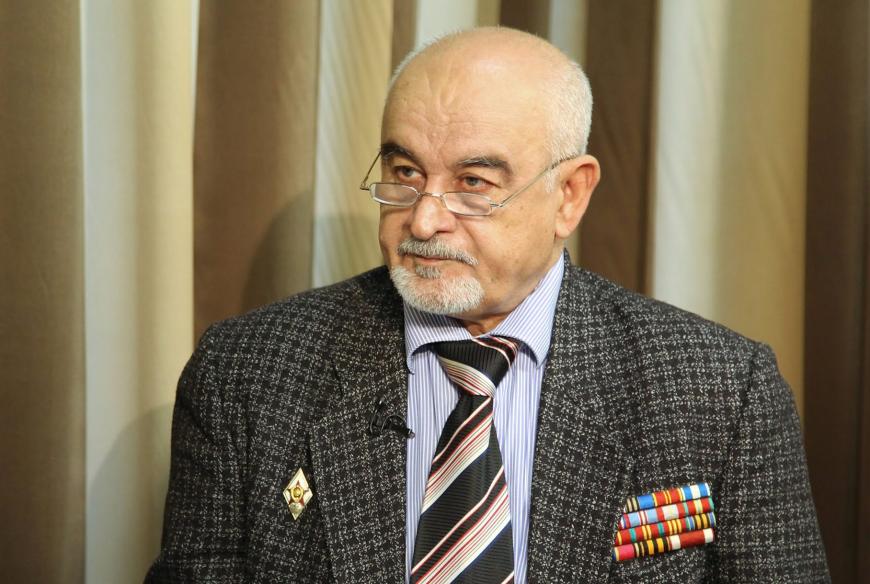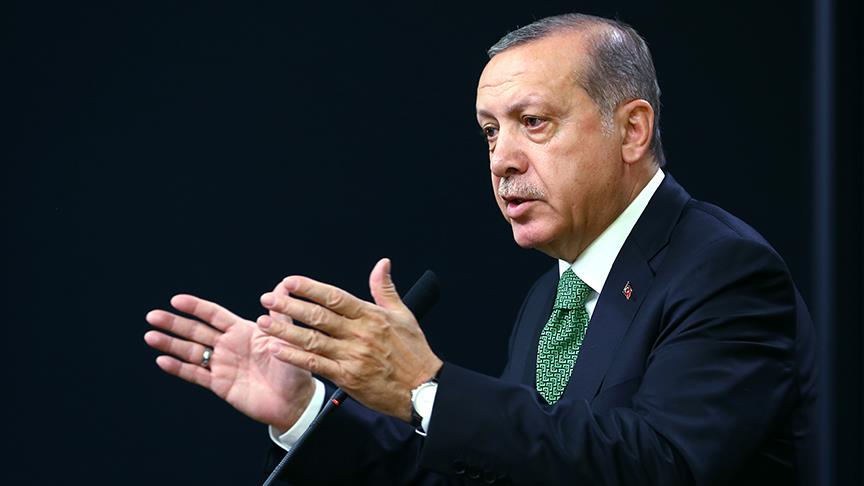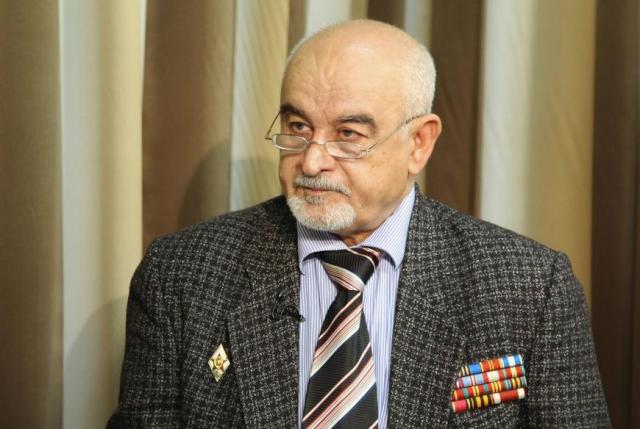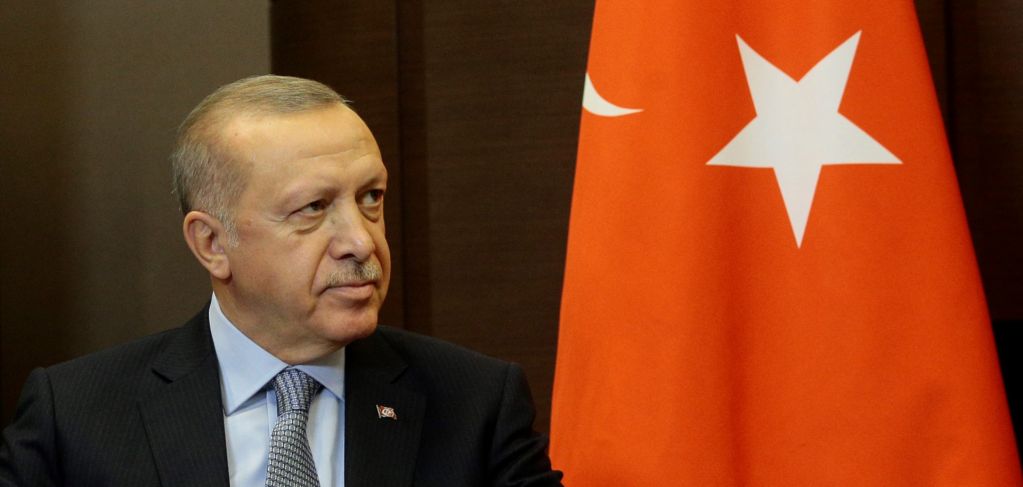Trump to confront Turkey about buying Russian defense system /Russian Media Outlet Versia.ru: Experts Fear That The S-400 Delivery To Turkey May Lead To Secret Technologies Leaking
Posted by: “pinar.enis” <pinar.enis@gmail.com>
,.,.,.,.,.,.,.,.,.,.,.,.,.,.,.,.,.,.,.,.,.,.,.,.,.,..,.,
By Deb Riechmann | AP
November 10, 2019 at 9:14 p.m. EST
NEW YORK — President Donald Trump will confront Turkey’s leader about his decision to buy a Russian air defense system when they meet this week at the White House amid strained relations between the two NATO allies.
Trump’s national security adviser, Robert O’Brien, said Sunday that the United States is still “very upset” by the move to purchase the Russian S-400 system. The U.S. says the system is not compatible with NATO forces and could compromise the F-35 fighter jet program and aid Russian intelligence. The Trump administration removed Turkey from the F-35 program in July.
O’Brien told CBS’ ”Face the Nation” that if Turkey doesn’t get rid of the Russian system, Turkey will likely face U.S. sanctions backed by a bipartisan majority in Congress.
Trump is scheduled to meet with Turkish President Recep Tayyip Erdogan on Wednesday and NATO Secretary-General Jens Stoltenberg on Thursday. Trump and Erdogan plan a joint news conference Wednesday afternoon.
“There’s no place in NATO for the S-400,” O’Brien said. “There’s no place in NATO for significant Russian military purchases. That’s a message that the president will deliver to him very clearly when he’s here in Washington.”
O’Brien said, however, that the U.S. will do everything it can to keep Turkey in NATO.
Turkey has been roundly criticized for its incursion into northern Syria to attack Kurdish forces that were fighting with the U.S. against Islamic State militants. Trump has been denounced for removing U.S. forces from the area before the incursion, but O’Brien said the administration did not pave the way for Erdogan’s offensive into Syria.
Copyright 2019 The Associated Press.
The following news was reported last week. Is Turkey trying to pressure Russia for greater technology transfer and joint production as regards the S-400’s (see the last article from MEMRI below); or is Turkey laying the groundwork for an agreement with the U.S. by perhaps cancelling delivery of the second half of the S-400’s on technical grounds?:
,.,.,.,.,.,.,.,.,.,.,.,.,.,.,.,.,.,..,.,.,.,.,.,
NOVEMBER 4, 2019 / 4:07 AM / 7 DAYS AGO
Turkey says delivery of second Russian S-400 batch may be delayed
ANKARA (Reuters) – Delivery of a second batch of Russian S-400 missile defense systems to Turkey may be delayed beyond a planned 2020 timeline by talks on technology sharing and joint production, the head of Turkey’s Defence Industry Directorate said on Monday.
NATO allies Turkey and the United States have been at loggerheads over the purchase of the S-400 system, which Washington says is not compatible with NATO defenses and poses a threat to its Lockheed Martin F-35 fighter jets.
Despite Washington’s warnings and threats of U.S. sanctions, Turkey started taking delivery of the first S-400 batch in July. In response, Washington has removed Turkey from the F-35 program, in which Ankara was a manufacturer and buyer.
Washington still hopes to persuade its ally to “walk away” from the Russian systems.
“We are planning a timeline for next year. As opposed to the first (batch), there is joint production and technology transfer here. It is beyond the ‘let’s buy it quickly and install it’ of the first system,” Ismail Demir told broadcaster NTV.
“The joint production concept may move the timeline. We have some sensitivities regarding some of the production being here. Technical work continues,” he said.
Despite the threat of U.S. sanctions over Ankara’s move to buy the Russian systems, Turkey has indicated it could procure Russian fighter jets if the United States refuses to deliver the F-35 jets it has purchased.
On Monday, Demir said Russia had offered to sell Turkey its Su-35 fighter jets.
“There is an offer and we are evaluating it. There cannot be such a thing as ‘we’re buying tomorrow’ in such matters. The offer’s financial and strategic aspects will be examined, there cannot be an immediate decision,” Demir said.
“It would not be right to say ‘the F-35 era is closed, the Su-35 era is beginning’, but we will evaluate the offer,” he said.
Ties between Ankara and Washington have been strained over issues such as Turkey’s offensive into northeastern Syria. Turkey has also been outraged over a decision by the U.S. House of Representatives to support sanctions on Ankara over its incursion and to recognize the mass killings of Armenians by the Ottoman Empire as “genocide”.
Despite this, Demir said Turkey was still open to offers by the United States to buy U.S. Patriot missile defense systems as long as they met Ankara’s conditions.
Reporting by Tuvan Gumrukcu and Can Sezer; Editing by Ece Toksabay and Giles Elgood
July 29, 2019
Special Dispatch
No.
8198
Russian Media Outlet Versia.ru: Experts Fear That The S-400 Delivery To Turkey May Lead To Secret Technologies Leaking; Recent History Shows That Turkey Can Suddenly Turn From Friend To Foe
The Russian media outlet Versia.ru reported that Russian experts fear that the S-400 delivery to Turkey may cause classified Russian military technologies to leak to the West. Versia.ru emphasized that Russian manufacturers were trying to safeguard the technologies by withholding documentation on production data in the transfers to Turkey, and therefore Ankara will be unable to gain access to the S-400 systems. Furthermore, the agreement stipulates that Turkey may not disassemble or modify the complexes.
After noting these assurances, Versia.ru warned that recent history proves that Turkey can suddenly turn from Russia’s friend to Russia’s foe. Anatoly Tsyganok, Head of the Center for Military Forecasting, told Versia.ru that following the S-400 deliveries to Turkey, a NATO country, a risk would arise that the US could explore Russia’s main air defense missile systems, and this could jeopardize Russia’s defense capability.
Below are excerpts from the article:[1]
The Negotiations For The Sale Of The S-400 Took Several Years, Why Are The S-400 Being Now Transferred So Quickly To Turkey By Airplanes?
“Russia started the delivery of the Triumph S-400 anti-aircraft missile systems to Turkey. For Moscow, this is a significant event and a symbol of diplomatic victory: it was possible to drive a wedge between Ankara and Washington, the two NATO countries! However, experts are finding numerous puzzling elements in the ‘Triumph’ systems delivery to Turkey.
“The sale negotiations for the S-400 took several years, why are they now being transferred so hurriedly to the Turks by airplanes? There is silence on the systems’ use conditions, although they may directly threaten Russian aircraft in Syria. And most importantly, will Russian military-technical secrets get away?
“Turkey’s sale contract for the Russian anti-aircraft missile systems S-400 was signed at the end of 2017, the price was $ 2.5 billion. First, it was about the delivery of two divisions, which are presumably to be maintained by Turkish personnel. Now it is reported that Ankara will receive four divisional sets. Currently, the Turkish military is choosing the future location of the S -400, the information is kept secret, so it is still completely unclear whether, for example, Russian aircraft in Syria will be in the sights of the Turkish S-400.
“The United States actively opposed this deal, as it counted on supplying Ankara with its Patriot air defense system. The Americans argued that the S-400 did not comply with NATO standards, and also noted the inadmissibility of military-technical cooperation with a country militarily opposed to the alliance. Nevertheless, the Turks, despite all the pressure from Washington, were able to have their way. Experts assumed that in order to achieve this Moscow had to make some very advantageous offers to the wily Erdogan. Apparently, it was feared that Erdogan might change his mind, and that explains the speed with which the S-400 appeared in Turkey. The complexes were delivered to the buyer by airplanes, although it was initially assumed that heavy equipment would be transported by sea, which is much cheaper. However, the most expensive option was chosen: they decided to use the An-124 ‘Ruslan’ aircraft for transportation – the only aircraft in the world capable of carrying such bulky and oversized cargo.
“Was it worth to hurry? In general, there was a reason for this.
“One can still remember the story of S-300 anti-aircraft missile systems’ shipment to Cyprus in 1996. They were shipped by large amphibious vessels. However, while they were in the sea, the United States, the United Kingdom and Turkey, which has territorial disputes with Cyprus, opposed the fulfillment of the contract. As a result, the deal fell through.
“Another unpleasant story happened with the recent delivery of Russian S-400 to China. In January 2018, a ship with components of this system, which left the Leningrad region, got caught in a storm in the La Manche region; as a result a part of the equipment was seriously damaged. To fulfill the terms of the contract, the rockets had to be built from scratch again. It seems that Moscow decided to not take risks.
The S-400 May Likely End Up In US Hands
“This way, Moscow was able to achieve what it wanted – a sale of S-400 to Turkey. However, a number of experts show concern, calling this contract a most dubious agreement in terms of preserving secrets. Obviously, Turkey seeks to obtain not only the weapons systems themselves, but also the technologies used in their creation. This is important because the Turkish military-industrial complex independently develops modern weapons and Ankara wants to minimize its dependence on arms purchases at foreign markets.
“Let’s recall that last year, when the Turkish authorities made a deposit for the S-400 delivery, they unexpectedly put forward a number of additional conditions. The Turks began insisting that secret technologies be transferred to them and on the joint production of rocket systems. Officially, it is reported that the Russian side refused to fulfill this request and access to the internal systems of the S-400 anti-aircraft missile complexes was excluded [from the contract]. Well, there is no choice but to believe these statements.
“Now Russian manufacturers say that no documentation on production data is transferred to Turkey, and therefore Ankara, and especially the Americans, will not be able to gain access to the S-400 systems. Upon an attempt to bypass the password and hack the system, the computer will automatically destroy all the data embedded in it. According to the agreement, Turkey does not have the right to disassemble the complexes and modify them. According to the manufacturers, this ensures that the Russian S-400 systems are reliably protected from any copying infringements. Armament maintenance will also be handled exclusively by Russian specialists, who will be able to control the integrity of the manufacturing seals.
“Additionally, each piece of machinery has special sensors that transmit a signal to a satellite military communication channel if someone makes an unauthorized dissection. And if an attempt is made to place the complex in a special hangar that obstructs signal transmission, all S-400 equipment will be instantly blocked. Also, for reliability, air defense missile systems are equipped with ‘friend-foe’ recognition systems.
“All this surely inspires hope. However, even recent history shows that Turkey can suddenly turn from Moscow’s friend to its enemy. And there is no guarantee that after the next conflict the Turkish authorities will not renounce all the agreements. In this case, it is likely that S-400 may end up in the hands of Americans, who are far better equipped to hack computer locks. As a result, NATO can get access to Russian secret technologies and learn how to counter them.
[…]

Anatoly Tsyganok (Source: Antimaidan.ru)
“Anatoly Tsyganok, Head of the Center for Military Forecasting:
“‘The S-400 sale to Turkey is an opportunity to make a profit and a unique advertisement for Russian weapons, a demonstration that even NATO countries are buying it. But there is a downside: it is obvious that leaks of information about these systems are quite possible. After the S-400 is delivered to Turkey, the risk arises that American technical personnel can access these complexes. That is, the US will be able to explore our main air defense missile systems, and this, in theory, could harm Russia’s defense capability. Although systems that have been exported have significantly lower properties, NATO countries will nevertheless receive general information about technologies. They will also have the opportunity to work out tactics against these systems during joint exercises. In addition, you need to understand that the S-400, if stationed on the border with Syria, could theoretically pose a danger to Russian military aviation.’”









